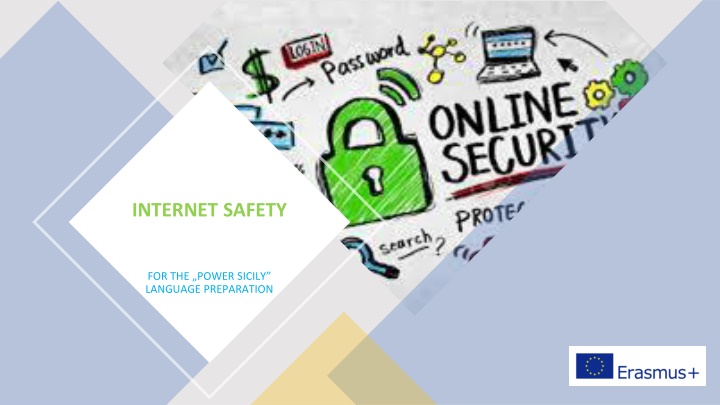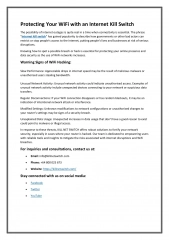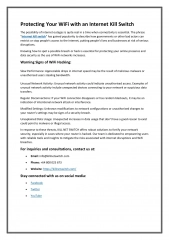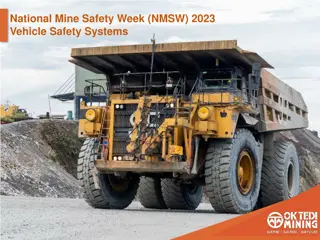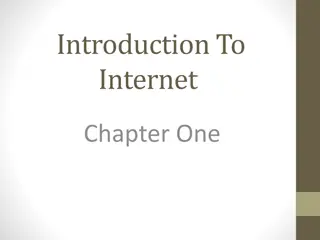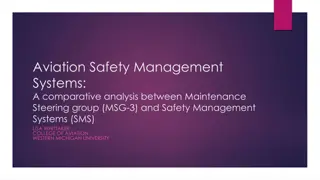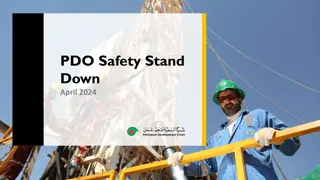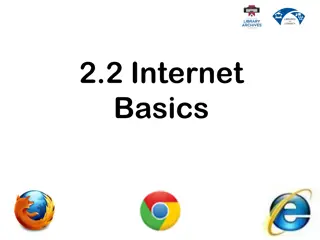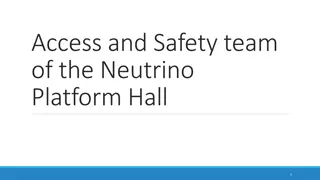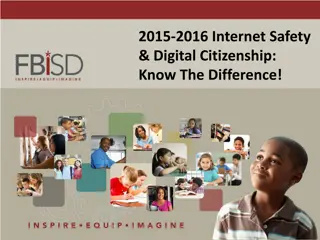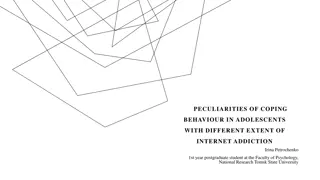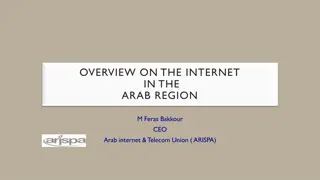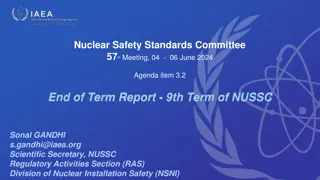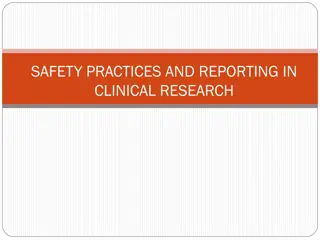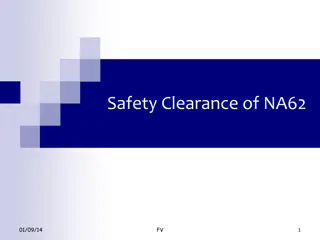INTERNET SAFETY
Internet safety is crucial for children and teenagers due to risks like cyberbullying, online predators, and inappropriate content. Cyberbullying, a form of harassment using technology, can have severe effects on victims, including anxiety, depression, and even suicide. It is important for parents and educators to educate young individuals about online safety measures to protect themselves from potential harm.
Download Presentation

Please find below an Image/Link to download the presentation.
The content on the website is provided AS IS for your information and personal use only. It may not be sold, licensed, or shared on other websites without obtaining consent from the author.If you encounter any issues during the download, it is possible that the publisher has removed the file from their server.
You are allowed to download the files provided on this website for personal or commercial use, subject to the condition that they are used lawfully. All files are the property of their respective owners.
The content on the website is provided AS IS for your information and personal use only. It may not be sold, licensed, or shared on other websites without obtaining consent from the author.
E N D
Presentation Transcript
INTERNET SAFETY FOR THE POWER SICILY LANGUAGE PREPARATION
INTERNET SAFETY DEFINITION AND SYNONYMS Internet safety or online safety or cyber safety or e-safety is the act of maximizing a user's awareness of personal safety and security risks to private information and property associated with using the internet, and the self-protection from computer crime.
RISKS nearly 50% children and teenagers have experienced cyber-harassment. Even though the Internet can be a wonderful tool for children and teenagers (they can use it to do research for schoolwork, communicate with teachers and other children), online access also comes with risks, such as inappropriate content, cyberbullying and online predators.
RISKS nearly 50% children and teenagers have experienced cyber-harassment. They say they have: been contacted online by someone they didn't know in a way that made them feel scared or uncomfortable received online advertising that was inappropriate for their age lied about their age to get access to websites
What Is Cyberbullying? Cyberbullying is when someone uses technology to harass, threaten, embarrass, or target another person. It happens on devices like smartphones, computers, tablets, and gaming systems. Cyberbullying hurts people, and in some cases is against the law. Sometimes cyberbullying can be easy to spot for example, if your child shows you a text, comment, or post that is harsh, mean, or cruel. Other acts are less obvious, like posting someone's personal information, or using photos or videos that hurt or embarrass another person. Someone might make a fake account or screen name to harass and bully, so you don't know who the bully is.
What Are the Effects of Cyberbullying? Young people have almost constant access to their devices, so cyberbullying is hard to escape. Children and teenagers can feel like they never get a break and feel the effects very strongly. Cyberbullying that is severe, long-lasting, or happens a lot can cause anxiety, depression, and other stress-related disorders in victims and bullies. In rare cases, some kids have attempted or died from suicide. Cyberbullies also can be suspended or expelled from school or kicked off of sports teams. Depending on the severity of the cyberbullying, they also might be in legal trouble.
What Are the Signs of Cyberbullying? Many kids and teens who are cyberbullied don't want to tell a teacher, parent, or trusted adults, often because they feel ashamed or fear that their devices will be taken away at home.
Signs of cyberbullying vary, but may include: being emotionally upset during or after using the Internet or the phone being very secretive or protective of one's digital life spending more time than usual in their room withdrawal from or lack of interest in family members, friends, and activities avoiding school or group gatherings What Are the Signs of Cyberbullying? slipping grades and "acting out" in anger at home changes in mood, behavior, sleep, or appetite suddenly wanting to stop using the computer or device being nervous or jumpy when getting a message, text, or email avoiding discussions about computer or phone activities
HOW TO STAY SAFE Internet Safety Laws Online Protection Tools (allows access control to adult material and help protect children from Internet predators. Many Internet service providers (ISPs) provide parent-control options. Software that helps block access to sites and restricts personal information from being sent online can also be obtained. Other programs can monitor and track online activity). Getting Involved in Choldren s Online Activities parental role
Teaching Young People to Be Smart About Social Media Most teenagers use some form of social media and have a profile on a social networking site. Many visit these sites every day. There are plenty of good things about social media but also many risks and things youngsters should avoid. They don't always make good choices when they post something to a site, and this can lead to problems. So it's important to use social media wisely.
What's Good About Social Media Social media can help young people: stay connected with friends and family volunteer or get involved with a campaign, nonprofit, or charity enhance their creativity by sharing ideas, music, and art meet and interact with others who share similar interests communicate with educators and fellow students
What's Bad About Social Media Most teenagers: post photos of themselves online or use their real names on their profiles reveal their birthdates and interests post their school name and the town where they live This can make them easy targets for online predators and others who might mean them harm.
Concerns and Consequences Besides problems like cyberbullying and online predators, teenagers also can face the possibility of a physical encounter with the wrong person. Many newer apps automatically reveal the poster's location when they're used. This can tell anyone exactly where to find the person using the app.
Concerns and Consequences And photos, videos, and comments made online usually can't be taken back once they're posted. Even when a teen thinks something has been deleted, it can be impossible to completely erase it from the Internet.
Concerns and Consequences Posting an inappropriate photo can damage a reputation and cause problems years later such as when a potential employer or college admissions officer does a background check. And sending a mean-spirited text, even as a joke, can be very hurtful to someone else and even taken as a threat.
Concerns and Consequences Spending too much time on social media can be a downer too. Seeing how many "friends" others have and the pictures of them having fun can make young people feel bad about themselves or like they don't measure up to their peers.
What Is Sexting? Sexting (or "sex texting") is sending or getting sexually explicit or suggestive images, messages, or video on a smartphone or through the Internet. Sexting includes sending: nude or nearly nude photos or selfies videos that show nudity, sex acts, or simulated sex text messages that propose sex or refer to sex act
Phishing It is a type of scam where the scammers disguise as a trustworthy source in attempt to obtain private information such as passwords, and credit card information, etc. through the internet. These fake websites are often designed to look identical to their legitimate counterparts to avoid suspicion from the user.
Malware Particularly spyware, is malicious software disguised as software designed to collect and transmit private information, such as password, without the user's consent or knowledge. They are often distributed through e-mail, software and files from unofficial locations. Malware is one of the most prevalent security concerns as often it is impossible to determine whether a file is infected, despite the source of the file.
